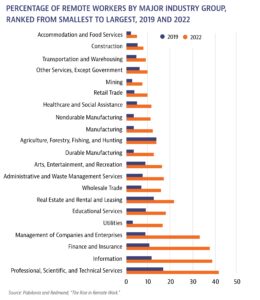Key Highlights
Challenges
The COVID-19 pandemic accelerated the adoption of automation, artificial intelligence, remote work, and e-commerce, prompting a significant rethinking of how and where work takes place. As AI becomes more integrated into the workplace, it raises important concerns about job displacement, workforce training, and the evolving role of human workers. Routine tasks are being automated, while jobs that require human interaction, critical thinking, emotional intelligence, problem solving, and relationship management remain in high demand.
At the same time, educational disruptions during the pandemic may have long-term effects on labor force readiness. Although AI-powered personalized learning tools are helping to improve some student outcomes, they are not a substitute for human educators.
Opportunities
Rather than replacing workers, employers are increasingly using AI to augment human skills, creating new roles in areas such as AI ethics, cybersecurity, data science, caregiving, mental health, and social work.
To prepare for these roles, education and training must evolve to integrate both technical and human-centered skills to equip workers for hybrid human-machine collaboration.
To give one example: Recognizing AI’s growing importance, California has begun incorporating AI literacy into K-12 curricula to prepare students for future careers.
In the long term, the shift to hybrid work has opened flexible job opportunities even in industries that have traditionally been in-person, while commercial real estate is adapting as office spaces are repurposed into housing or mixed-use developments.

Findings and Next Steps
- Workers will need upskilling programs that blend AI knowledge with human-centered skills to adapt to the changing labor market — including making human skills and adaptability part of curricula from K-12 through higher education and adult learning.
- Policymakers must invest in lifelong learning systems to enable access to remote work, education, and AI opportunities.
- Funding and expanding workforce training programs that prioritize human-AI collaboration, especially in sectors most affected by automation, is necessary.


